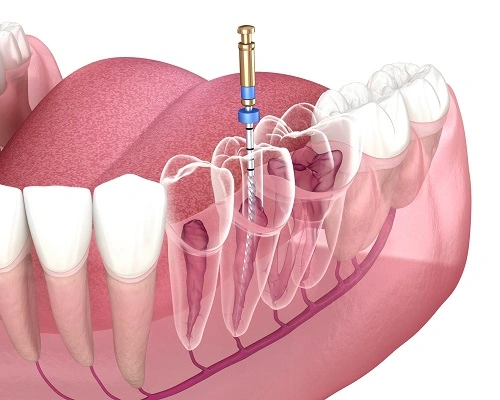Dental health is a crucial aspect of overall well-being, and maintaining healthy teeth and gums is essential for a confident smile and the proper functioning of the mouth. Root canal therapy, often misunderstood and sometimes feared, plays a significant role in preserving natural teeth and preventing more invasive dental procedures.
Understanding Root Canal Therapy
Root canal therapy, also known as endodontic treatment, is a procedure used to treat infected or damaged tooth pulp. The tooth pulp, located inside the tooth and extending down to the roots, can become infected due to deep decay, repeated dental procedures on the same tooth, cracks or chips in the tooth, or trauma to the face. If left untreated, this infection can lead to severe pain, abscess formation, and ultimately, loss of the tooth.
Common Misconceptions about Root Canal Therapy
There are several misconceptions surrounding root canal therapy, primarily centred around pain and effectiveness. Many people believe that root canal therapy is extremely painful, but with modern techniques and anaesthesia, the procedure is typically no more uncomfortable than getting a dental filling. Another misconception is that tooth extraction is a better alternative; however, preserving the natural tooth through root canal therapy is generally the preferred option whenever possible.
Benefits of Root Canal Therapy
The primary benefit of root canal therapy is saving a natural tooth. This helps maintain proper chewing function and prevents adjacent teeth from shifting out of place. Additionally, root canal therapy alleviates pain and infection, promotes efficient chewing, and restores the natural appearance of the tooth.
Procedure for Root Canal Therapy
During a root canal procedure, the dentist or endodontist removes the infected or damaged pulp from the tooth. The inside of the tooth is carefully cleaned and disinfected, then filled and sealed with a material called gutta percha. In some cases, a crown may be placed on top of the tooth to provide additional strength and protection.
Aftercare and Recovery
After root canal therapy, it is normal to experience some sensitivity or discomfort for a few days. Over-the-counter pain medications can help alleviate any discomfort. It’s essential to practice good oral hygiene, including regular brushing and flossing, to maintain the health of the treated tooth and surrounding gums.
Cost Considerations
The cost of root canal therapy can vary depending on the tooth’s location, the severity of the problem, and the dentist’s expertise. Generally, root canal therapy is more cost-effective than tooth extraction, followed by tooth replacement options such as dental implants or bridges.
Alternatives to Root Canal Therapy
The main alternative to root canal therapy is tooth extraction. However, extraction can lead to other issues, such as difficulty chewing, bone loss in the jaw, and the need for replacement options that may be more invasive and costly.
Risks and complications
While root canal therapy is a common and safe procedure, there are risks associated with any dental treatment. These can include the possibility of incomplete cleaning of the tooth’s root canals, which may require retreatment or, rarely, a fracture of the tooth.
Myths vs. Facts: Debunking Root Canal Misconceptions
Addressing common myths about root canal therapy can help patients make informed decisions about their dental care. For example, contrary to popular belief, root canal-treated teeth are not dead but can function normally for many years with proper care.
Signs and Symptoms: When to Consider Root Canal Therapy
Symptoms that may indicate the need for root canal therapy include severe tooth pain, sensitivity to hot or cold temperatures, swelling around the gums, and darkening of the tooth. Prompt treatment can prevent the infection from spreading and save the tooth.
Preventive Dental Care: Avoiding the Need for Root Canal Therapy
Good oral hygiene practices, regular dental check-ups, and addressing dental issues promptly can help prevent the need for root canal therapy. Preventive care includes brushing teeth twice a day, flossing daily, and limiting sugary foods and drinks.
Impact on Overall Health
Maintaining healthy teeth and gums through procedures like root canal therapy can have a positive impact on overall health. Poor oral health has been linked to systemic conditions such as cardiovascular disease and diabetes, making preventive dental care crucial.
Conclusion
Root canal therapy is a valuable procedure for preserving natural teeth and relieving pain caused by infected or damaged tooth pulp. Despite misconceptions, modern root canal procedures, typically conducted by a qualified dentist in Currambine, are painless and highly effective. Patients should consult with a dentist in Currambine to discuss their options and determine the best course of action for maintaining optimal dental health. By understanding the benefits, procedure, aftercare, and alternatives associated with root canal therapy, individuals can make informed decisions to support their long-term dental well-being.
FAQs
1. How often should I have dental scaling done?
It is generally recommended to have dental scaling done every 6 months as part of routine dental care. However, your dentist may recommend more frequent scaling if you have a history of gum disease or plaque buildup.
2. Is dental scaling painful?
Dental scaling is typically not painful, as local anaesthesia or numbing agents may be used to ensure comfort during the procedure. Some patients may experience mild discomfort or sensitivity afterwards, which usually subsides quickly.
3. Can dental scaling damage enamel?
When performed by a skilled professional, dental scaling should not damage enamel. The instruments used are designed to safely remove plaque and tartar without harming the teeth.
4. What is the difference between scaling and root planning?
Scaling involves removing plaque and tartar from the teeth and gum line, while root planing smooths the tooth roots to prevent bacteria from reattaching. Root planing is often recommended for treating early stages of gum disease.
5. Does dental scaling replace brushing and flossing?
No, dental scaling complements regular brushing and flossing. It removes hardened plaque and tartar that cannot be removed by brushing alone, enhancing the effectiveness of your daily oral hygiene routine.




